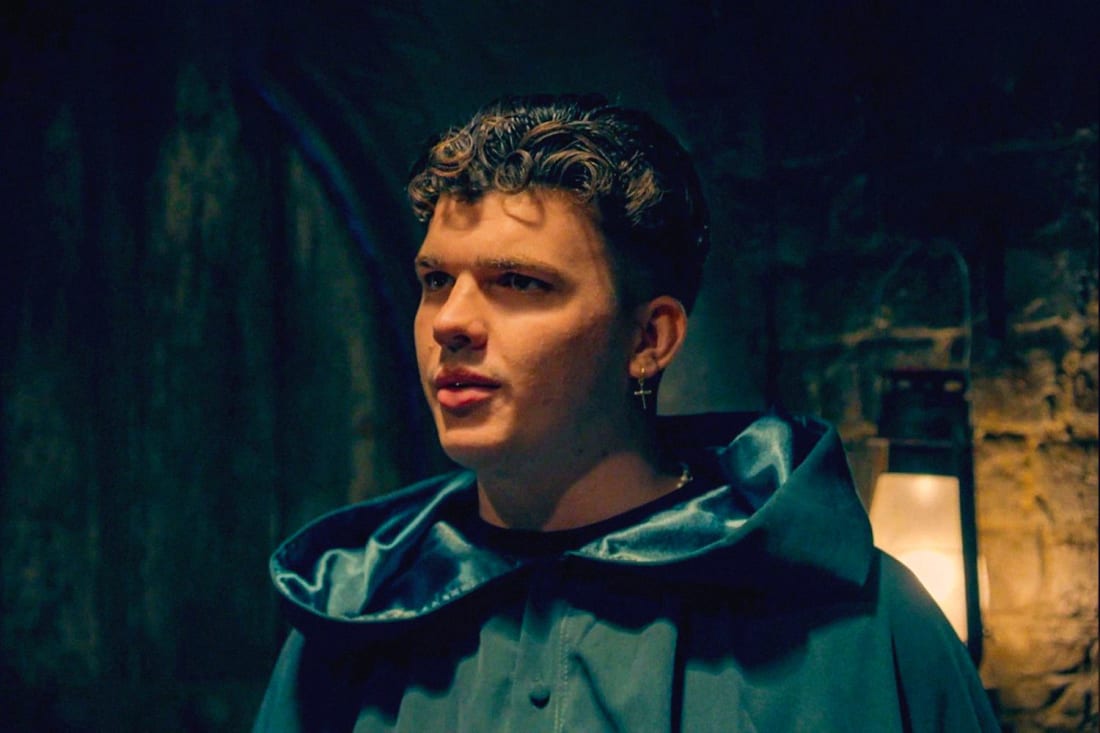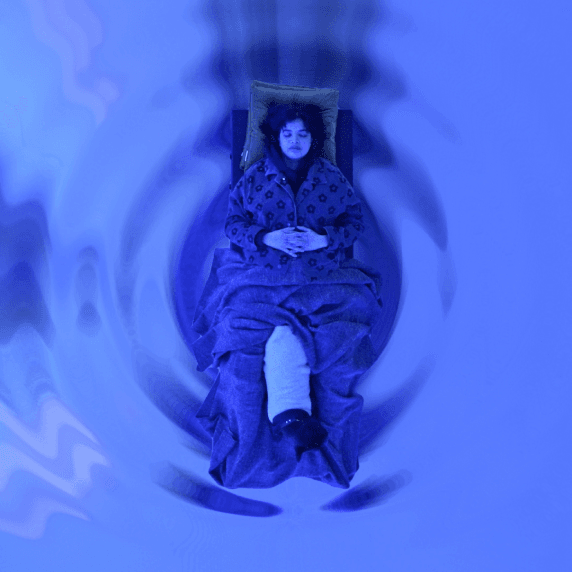‘Girl famous’: female fans are breaking male Hollywood stars
Want to make it in acting these days? You’ve got to get the girlies on board
Want to make it in acting these days? You’ve got to get the girlies on board
It’s increasingly arduous work being a superfan of today’s actors. Where once you only had to be infatuated by, say, one to three heartthrobs at a time – R-Patz was arguably the OG internet boyfriend, Timothée went relatively unchallenged for a long time, and Jeff Goldblum recently passed the ‘daddy’ torch over to Pedro Pascal – now there’s a whole host of rising stars to obsess over. Yes, I’m talking about the current heartthrob coalition, led by Jacob Elordi, Barry Keoghan, Paul Mescal (who, with his own beautifully absurd rumour, is kind of a veteran now), Charles Melton, and, ofc, Jeremy Allen White.
These actors aren’t necessarily new on the scene – Elordi had his breakout in 2019’s Euphoria, Melton in 2017’s Riverdale, and White in 2011’s Shameless – but they’re all having their superstardom moment now. And, it seems, the girlies are partly responsible.
As well as all being great actors and, y’know, conventionally attractive, this new generation of leading men have another key trait in common: they’re all – what we’re calling – ‘girl famous’. ‘Girl’ in this context means women, sure, but also refers to a vibe: a dedicated, social media-savvy fan base of mostly young women, queer men and non-binary folk who’ve helped break and boost these actors’ careers early. It’s not just men who are ‘girl famous’, either. Newcomers like Ayo Edebiri, Rachel Sennott (who starred together in Bottoms), Taylor Russell, and, most recently, Mean Girls’ Reneé Rapp have also skyrocketed to fame, propelled by the devoted girls, gays, and theys of the world wide web.
This isn’t exactly a new phenomenon; fangirls have been a mainstay of pop culture, and notably music, forever – from Elvis to the Beatles to Harry Styles to Taylor Swift. Similarly, although stan culture has ramped up in recent years, it’s been prevalent, especially on Twitter, since the mid-2010s. What feels different is that fans of the likes of Elordi, Mescal, and, back in the day, Chalamet have been the driving force behind these newfound faves’ rise from fledgling actors to Hollywood megastars. Sometimes the journey is rapid, as was the case for Chalamet post-Call Me By Your Name and Mescal post-Normal People, but sometimes it can come after years of, shall we say, unrewarded commitment (looking at you, Jeremy fans).
“This past year, mainstream cultural institutions have started to take these teen heartthrobs seriously, which is both validating and infuriating,” says 27-year-old Nicole, a Charles Melton fan who, before his snub this week, described herself in her Twitter bio as ‘the unofficial CEO of Charles Melton’s Oscar campaign’. “Because, like, obviously! We’ve been telling you!”
Briony Hannell, sociology teacher at the University of Sheffield and author of Feminist Fandom: Media Fandom, Digital Feminists, and Tumblr, partly puts this shift – of fan leverage over who becomes the ‘next big thing’ – down to the fact that “many girls and young women feel increasingly comfortable with their reputation as economically-influential fans and consumers”. Women, and especially teen girls, have long been targeted by the entertainment industry as a formidable purchasing power (though this doesn’t necessarily mean they’ve been treated with respect), but where once they had to rely on the industry itself for celebrity access, now the dynamic has shifted.
Not only do fans have a direct line to the celebs themselves, they also have each other to provide a constant stream of photos, fancams, facts and news updates. They no longer need legacy powerhouses to do it for them. Fans are acutely aware of all of this – which can sometimes lead to entitlement; they know their clicks are currency, and so, if publications and producers want to capitalise on their attention both online and off, they have to give fans what they want. (It’s worth pointing out that this tends to result in the exploitation of fans, fan culture, and once-sacred fan spaces.)
So, what makes these fans set their star-making sights on someone? The most obvious answer is hotness, but this stereotype – of hysterical and sexually out-of-control fangirls – has long been used to, as Hannell puts it, “devalue girls and women’s cultural tastes and interests”. “These stereotypes are used to prop up myths about girls and women being less capable than men at recognising substantive aspects of ‘quality’ media texts,” says Hannell. “Women are ‘obsessed fans’, while men are ‘collectors’ or ‘connoisseurs’.”
Still, that’s not to say sexual attraction doesn’t come into it at all. “It is admittedly a bit of thirst,” says Nicole, who’s been a fan of Melton since his turn as Reggie in Riverdale. But it’s also about their genuine skill. “The way he embodies his character in May December is amazing to watch,” she continues. “Some might have written him off as not having the range before seeing that movie, but when I started seeing Oscar buzz about him, I felt a sense of pride [about having stuck with him from the start].”
There’s something else about this particular group of men: they all seem… nice. At a time when many young men are worryingly idolising misogynists like Andrew Tate, it’s no wonder women are striving for – and then championing – positive male role models. Chloé, a 16-year-old Jacob Elordi fan who’s made hours of edits dedicated to the actor, says she only became an active fan after seeing his personality in interviews. The same thing happened to 20-year-old Eryn, only Paul Mescal is the object of her affection. “People like Paul Mescal and Jacob Elordi are the antithesis of toxic masculinity,” says Eryn, “not just within their [personalities and] fashion, but within their characters, too. In Normal People, we saw Connell open up about his struggles with anxiety, depression, and loneliness, and getting help for it. It was a refreshing change of direction, and I think it’s helped men be more open about their own mental health struggles. We should thank the actors who are able to portray these roles so gracefully for this.”
Even more important than the actors themselves might be the community that fans get to be involved in because of them. “It feels like we have a real bond due to the shared love of Mescal’s work,” continues Eryn. “Every fan interaction I’ve had across all platforms has been so lovely and positive; I’ve never been told I’m not a ‘true fan’ because of ‘X, Y, or Z’.”
That there’s a contingent of these wildly successful rising stars also says something about who ‘fangirls’ are today. “The period of fangirling extends much later into life,” says Victoria Cann, an associate professor in humanities at the University of East Anglia, whose work explores girlhood and fangirl culture. “Women are extending the settling-down period later into life, which allows for more practices of pleasure in your 20s and 30s. It’s no longer just teenagers driving fandoms, it’s also women with disposable incomes, who can demonstrate their allegiance by buying the right things (there’s money to be made by exploiting these parasocial relationships).”
“Non-binary and queer folks are also building this culture with us, which pushes back against the idea that femininity is trivial,” Cann adds. “We’re all working together to find a space to make [these fandoms] work.”
That’s not to say these fans don’t still face ridicule. Larissa, a 27-year-old Mescal fan, doesn’t hide her fan page from people she knows IRL, and so she often gets comments like, ‘This is so silly’, or ‘This is childish’. “It’s normally from guys who sit on their sofas screaming at the television over a football game,” she points out. “No judgement – I do the same when my team plays – but it’s just funny how I’m then considered hysterical for supporting an artist’s career.”
“It’s all deep-rooted misogyny,” adds Chloé. “It’s really sad to see all the hateful comments towards young women who quite literally keep a lot of people’s careers alive.”

Same-old stereotypes aside, does this spate of ‘girl famous’ stars suggest that young women are being taken more seriously as fans? “We’re at a moment in time where traditionally feminised forms of fandom have become hypervisible and mainstream online,” says Hannell. “Fannish practices and behaviours that used to be exclusive to only the most devoted of fans – like binge-watching – are now commonplace and even encouraged by the industry. This normalisation is encouraging evidence of change, as more ordinary and less pathologising images of girls and women as fans become more routine.”
But, Hannell warns, although these fans do hold economic power, “it still pales in comparison to the multi-billion dollar industry and the inequalities that exist within, and beyond, it”.
The fans, at least, are optimistic. “I think people in fandoms have started to take themselves more seriously and not devalue their own opinions,” says Nicole. “We’re at a place right now where we really do have a voice.”
For better or worse, then, there’s no denying that these young women and queer and non-binary folk have at least some power to make or break an artist. To us, that’s a feat that shouldn’t be ridiculed. After all, if you want to rise to superstardom, you’ve got to get the girlies on board.
Latest



















